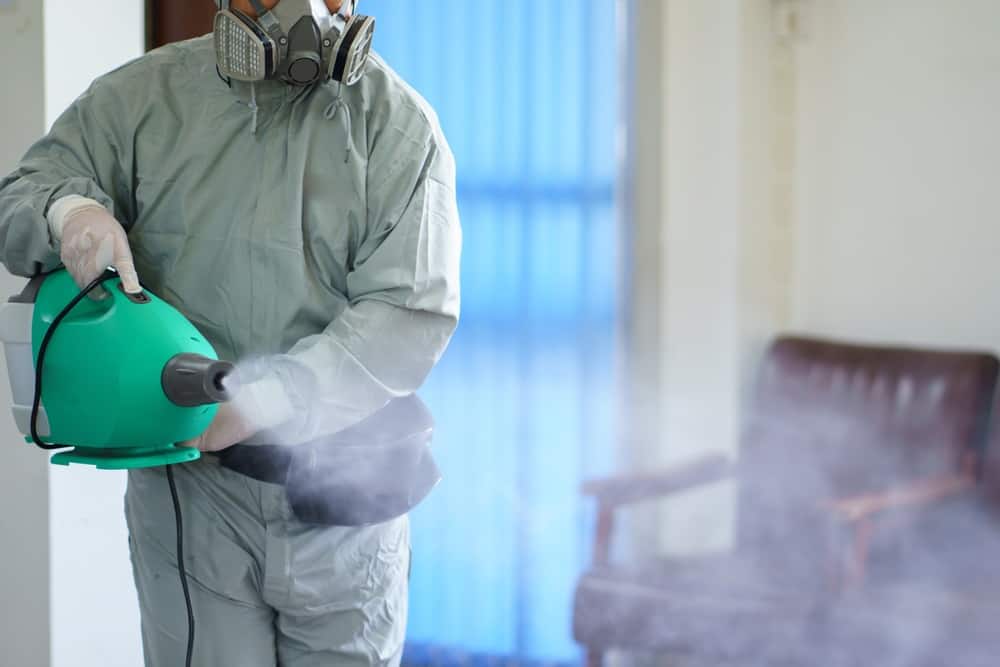Crime scene cleaning, disinfecting, and dwell time are essential not only for public health and safety, but for restoring the environment of a traumatic event, eliminating odors, preventing cross-contamination, and meeting legal requirements.
Crime scene cleanup is a hazardous job that requires specialized equipment and training to safely process a scene. There are protocols put into place by local authorities to ensure the safety of the environment and the public.
When your home or business has become the scene of a crime, understanding what to expect for cleaning, sanitation, and dwell time can help to bring you comfort. Here’s a closer look at what to expect during a crime scene cleanup, disinfection, and sanitation.
What Is Cleaning?
 Crime scene cleaning, also known as forensic cleaning or biohazard remediation, is the process of scrubbing a scene where a violent crime, accident, suicide, or other traumatic event has occurred. Crime scene cleaners are trained professionals who are responsible for safely and thoroughly cleaning and disinfecting a scene, ensuring that all biological and chemical contaminants are removed, and restoring the area to its pre-incident condition.
Crime scene cleaning, also known as forensic cleaning or biohazard remediation, is the process of scrubbing a scene where a violent crime, accident, suicide, or other traumatic event has occurred. Crime scene cleaners are trained professionals who are responsible for safely and thoroughly cleaning and disinfecting a scene, ensuring that all biological and chemical contaminants are removed, and restoring the area to its pre-incident condition.
In addition, crime scene cleaners also work with law enforcement agencies to gather evidence, document the scene, and provide any necessary information for the investigation. Plus, state and local laws have different legal requirements. A dedicated crime scene cleanup company follows the legal requirements in place to ensure any financial and legal penalties are avoided.
Crime scene cleaning involves a range of tasks, including:
- Removing biohazardous materials
- Disposing of contaminated materials, including removing any necessary portions of the building where a crime or accident occurred
- Decontaminating surfaces and objects
- Restoring the scene to its original state
During a cleanup, crime scene cleaners must follow strict protocols and guidelines to prevent the spread of infectious diseases and other health hazards. They also must adhere to local, state, and federal regulations regarding the handling and disposal of biohazardous materials.
What Is Disinfecting?
Crime scene disinfecting is the process of using specialized disinfectants and techniques to eliminate all traces of biological contaminants at a crime scene. This process is critical for ensuring that the scene is safe for individuals who may come into contact with the area and for preventing the spread of infectious diseases. While the chemicals and techniques used during the disinfection process are important, honoring dwell time is vital too.
Disinfecting a crime scene involves the removal and disposal of all biological materials, such as blood, bodily fluids, and tissue. This is completed through the use of specialized chemicals that are designed to kill all remaining bacteria, viruses, and other pathogens. The goal of crime scene disinfecting is to ensure the safety of the public and provide sanitation in the environment for those who may come into contact with the area.
In some crime scenes, the biological matter will soak under walls and floorboards. If the hazards can’t be cleaned up, crime scene cleaners will remove the carpeting, drywall, and any floorboards underneath to disinfect the area.
Difference Between Disinfecting and Sanitizing
Crime scene disinfecting and sanitizing are two different processes that involve the removal of biological and chemical contaminants from a crime scene. While both processes aim to eliminate bacteria, viruses, and other pathogens, there are some key differences between the two.
Sanitizing involves reducing the number of microorganisms on a surface to a safe level. Sanitizing a surface may involve using a chemical disinfectant to kill most, but not all, of the microorganisms on the surface. In contrast, disinfecting is a more thorough process that involves the use of specialized chemicals and techniques to kill most bacteria, viruses, and other pathogens on a surface.
Crime scene disinfecting goes a step further than sanitizing as it involves the complete removal and disposal of all biological and chemical contaminants from a crime scene. Crime scene disinfecting is necessary to ensure that the scene is safe for individuals who may come into contact with it and to prevent the spread of infectious diseases.
Cleaning and Disinfecting: Two-Step Process
Crime scene cleaning and disinfecting are typically two-step processes that involve the removal of biological and chemical contaminants from a crime scene and the subsequent disinfection of the area.
The first step in crime scene cleaning is the removal and disposal of all biohazardous materials. Once all the materials have been removed, the area is thoroughly cleaned and sanitized to remove any remaining contaminants. Proper cleaning techniques help to prevent the spread of contaminants from one surface or object to another.
The second step in crime scene cleaning is the disinfection of the area. The disinfection process kills any biological materials that can spread infectious diseases such as HIV, Hepatitis B, and Hepatitis C, which reduces the risk of disease transmission. Disinfectant agents will be applied and left for the appropriate dwell time before contamination levels are checked. After a scene has been disinfected, special tests are run through the entire area to confirm there’s no further contamination left. If there’s any contamination left behind, the cleaning and sanitation or disinfection process will begin again.
The Importance of Dwell Time
Dwell time is an important factor in crime scene cleaning as it refers to the amount of time a disinfectant must remain on a surface to effectively kill pathogens that the disinfectant is registered to counteract. It is a critical factor in ensuring that the disinfectant is effective in eliminating all traces of biological contaminants from the scene.
Different disinfectants have different dwell times, and dedicated crime scene cleaners follow the manufacturer’s instructions to ensure that the disinfectant is applied for the appropriate amount of time. If a cleanup crew fails to follow the recommended dwell time, it can result in an ineffective disinfection process. As a result, this can increase the risk of infection and disease transmission.

Understanding the Importance of Cleaning, Disinfecting, and Dwell Time
Crime scenes can be traumatic and emotional. Cleaning and disinfecting can help to restore the environment to its pre-incident condition, which can lessen the emotional impact on those who are affected by the incident. If you’re ready to learn more about cleaning, disinfecting, and dwell time, contact us today.



